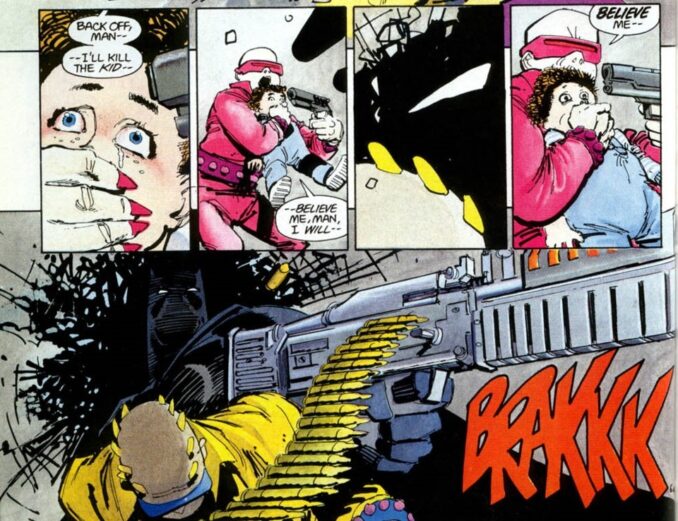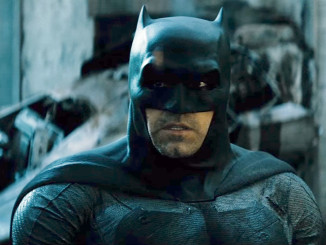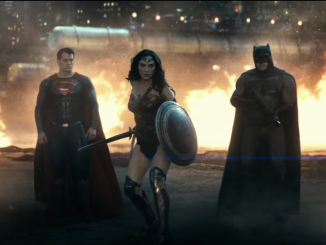
“People are always like Batman can’t kill, right? So Batman can’t kill is canon. And I’m like, ‘Okay, the first thing I want to do when you say that is I want to see what happens.’ And they go like, ‘Well, don’t put him in a situation where he has to kill someone.’ I’m like, ‘Well that’s just like you’re protecting your god in a weird way, right? You’re making your God irrelevant if he can’t be in that situation. He has to now deal with that. If he does do that what does that mean? What does it tell you? Does he stand up to it? Can he survive that, right, as a god, as your god. Can Batman survive that?”–Zack Snyder on The Joe Rogan Experience.
Comic book fans are notoriously touchy when it comes to their favorite comic book heroes being adapted to the big screen. They famously have a thin skin when it comes how these characters are brought to the screen by self-proclaimed auteurs. This goes far beyond the armchair racists who moan and complain when a white character from the comics is portrayed by a person of color. For decades, comic books have been considered as entertainment for children or the mentally weak. And while the comic book medium had matured into a form or literature, this childish perception sustained. Comic fans had to suffer through Bat-Shark Repellent, a planned film where Peter Parker turned into a spider monster, and a proposed Green Lantern film where a slacker Jack Black would stumble on to the power ring by accident.
Comic book fans require fealty in our comic adaptations. There is room for interpretation of course, but the adaptations need to keep true to the spirit of the source material. And there are character traits from the comic books that are more sacrosanct than others. Batman’s refusal to kill is one of the sacrosanct ones. Needless to say, when Zack Snyder implied during an interview with Joe Rogan quoted above that not having Batman kill makes him irrelevant, it caused much anger in comic book fans.

Here’s a little secret you may not have known. Batman didn’t always have a code against killing. In his very first comic book adventures, he was a gun-toting vigilante that resembled the pulp heroes he was based on. While he wasn’t quite as blood thirsty as The Shadow and The Spider, he had no problem with punching a bad guy into a vat of acid or strafing a truck full or criminals with his Batplane.
However, editor Whitney Ellsworth noticed that a lot of Batman readers were young children, especially after they introduced Robin into the feature in 1940. So, he established a non-killing policy in the strip to stave off any potential problems with the kids’ parents. This no-kill edict was codified more in the 1950s after the Comics Code Authority was founded, an authority founded in response to the violence and gore in certain comic books of the day, an organization established to make sure the comics published by all comic book companies were completely squeaky clean for the kiddies.
So, Batman has had a non-killing code for over 80 years, and it has hamstrung the character so much that Batman has become one of the most recognizable characters to come out of comic books, recognized by many people who have never picked up a comic in their life, and whose comic is a consistent best seller to this very day. Imagine how much of a success he would have been if he was actually relevant.
Dozens of writers and artists have made the most of the editorial non-killing edict and created a more fascinating character because of it. Batman became a man who, scarred by having the two most important people in his life murdered before his eyes, vows never to take a life, never cause another person to feel that same pain. To do so would make him as bad as the villains he faces. This characterization has stood the test of time. It made it through the 1970’s and the rise of antiheroes like Harry Callahan and Paul Kersey. It lasted through the 1980s when Arnold Schwarzenegger was killing bad guys with a quip and Sylvester Stallone was perforating the Viet Cong with a machine gun. Batman has refrained from killing when many other popular heroes were acting as executioners. That makes Batman a much more interesting character than one who kills indiscriminately.
Well, to everyone other than Zack Snyder because he thinks killing is kewl. Snyder writes and directs like an adolescent. He is like Beavis and Butthead come to life (“Hee hee! Batman should kill! Kill Kill Kill!” “Shut up Beavis, I’m filming Gal Gadot’s ass in slow motion.”). What he creates isn’t art. It’s films that are meant to stimulate the primal, lizard brains of his fans. He is not cut out to make a nuanced characterization out of Batman’s unwillingness to kill.
I mean, I’m sure Snyder thinks he’s nuanced. This is the man who had the set decorator put a Mapplethorpe photo in Bruce Wayne’s bedroom and expected viewers to know that meant Bruce uses sex to deal with his pain. He’s a man who made a handful of good films early on in his career, had a whole bunch of powerful people blow smoke up his ass, and developed an enormous ego because of it. It’s so big that he thinks everything he believes is 100% right and he knows better than 80 years of history.

He even has the balls to compare his take on Batman to Frank Miller’s work in the seminal The Dark Knight Returns, specifically referencing the scene in the above image, a scene that he apes in the Martha Kent rescue scene in Batman v. Superman. Snyder is so laser-focused on this one scene from the comic books where Batman kills that he completely ignores context the scene appears in.
The Dark Knight Returns is one of the best comic book stories ever. It is a masterful mix of writing and artwork. It also is not in canon. It is a made up story’s made up story. It is a potential future that takes place 10 years after Bruce Wayne retired as Batman in a Gotham City that has gone to shit in Batman’s absence. A new, more savage, more violent breed of criminal rose up in Batman’s absence, causing Bruce to once again put on the tights. It’s an alternate reality that allowed Frank Miller to deconstruct the Batman mythos. Therefore, Batman’s killing the kidnapper in this scene is part of Miller’s larger commentary on vigilantism and violence begetting violence. Snyder’s having Batman kill the thugs that are between him and the kryptonite he wants to steal is Snyder using the killing to make Batman look more badass. The two examples are not even close to being in the same weight class.
But the fact that Snyder thinks that they two examples carry the same weight show us why his version of the DCU failed. Snyder thought his style equated substance, that he was doing the same kind of deconstruction that Frank Miller and Alan Moore were doing with the characters. However, Snyder was only floating on top of the pool while Miller and Moore were diving deeply in. The fact that Snyder didn’t realize that his brand of deconstruction was superficial at best, that he thought he was honoring these characters with his lunkheaded interpretation of them and not insulting the characters, their creators and their fans shows without a shadow of a doubt that he was the wrong man to be entrusted with these characters. Thank god he’s never going to be allowed to put his hands on them again.




